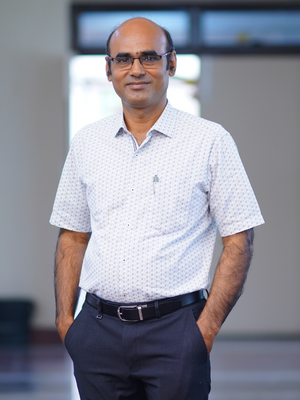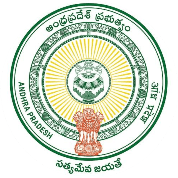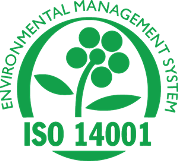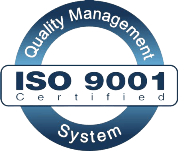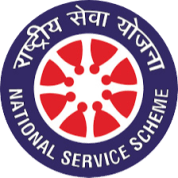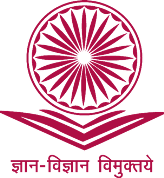Qualification
Ph.D. (2003) – Department of Chemistry, Anna University, Tamil Nadu, India.
PDF/Teaching Experience
• Professor of Material Science and Nanotechnology, Yogi Vemana University, Kadapa: July 2015 – Till date.
• Associate Professor in Material Science and Nanotechnology, Yogi Vemana University, Kadapa: July 2009 – June 2015.
• Visiting Professor SMSE, Jiangsu University of Science and Technology, China: 2022-2024.
• Brain Pool Fellow, Konkuk University, Seoul, South Korea: Oct 2024- Dec 2026.
• Post Doctoral Fellow - CNRS Researcher (Tenured Track), CNRS, Strasbourg, FRANCE: July 2009 - Sept 2009.
• Post Doctoral Fellow at University of Strasbourg, Strasbourg, FRANCE: March 2008-July 2009.
• NIMS Post Doctoral Fellow at National Institute of Materials Science (NIMS), JAPAN: Oct 2006-Feb 2008.
• Post Doctoral Fellow at National Central University, Chung-Li, TAIWAN: Jan 2006 - Sept 2006.
• INRA Post Doctoral Fellow at French National Institute for Agricultural Research (INRA), Versailles, FRANCE: Jan 2004 - Jan 2006.
Administrative Experience
• Director, IT & Networking Cell and IT Hub (01 September 2022 – 25-01-2024).
• Co-Convener, APPGCET - 2021 and 2022.
• Head, Department of Materials Science and Nanotechnology (01 December 2020 – 30 November 2022).
• Director, Internal Quality Assurance Cell (IQAC) January 2020 – December 2022.
• Nodal Officer, RUSA, March 2017 – October 2019 [Establishment of Research Facilities and building constructions for Rs.20 crores] .
• Deputy Director, Directorate of Admissions, YVU.
• Member, Directorate of Admissions, YVU [two periods] .
• Nodal Officer, National Institutions Ranking Framework (NIRF-2017) .
• Chief Superintendent of External Examinations.
• Chairman, Board of Studies in Materials Science & Nanotechnology.
• Controller of Examinations [I/c], February 2011 – February 2012.
• Head, Dept Materials Science & Nanotechnology (Founder Head) .
• Chairman, College Affiliate Committee, YVU.
• Convenor / Member in college development council for affiliated college inspection.
• Vice-Chancellor’s Nominee, Central Purchase Committee, YVU.
• Member, Central Purchase Committee, YVU.
Research Projects
Ongoing
• Mini-Pilot scale demonstration of photocatalytic Hydrogen Production under Solar Light Irradiation| INR. 44,45,100 | 2023-2026 | NRB-DRDO
• Design and development of metal oxynitride nanostructured photocatalysts for visible-light-driven hydrogen generation – A cleaner pathway for conversion of Industrial waste into chemical fuel | INR. 10,00,000 | 2024-2026 | RUSA 2.0
• Utilization of Oman and Qatar Sustainable Solar Energy for the Production ofGreen Hydrogen Energy Sultan Quaboos University, Qatar - Yogi Vemana University, India | 2024-2026
Completed
• Development of Semiconductor Nanocomposites for Photocatalytic Water Splitting into H2 and O2 under Solar light Irradiation | INR. 59,66,191 | January 2011 to December 2014.
• Hierarchical Composite Nanostructure Photocatalysts for Efficient Water Splitting under Solar Light Irradiation | INR. 72,00,000 | January 2016 to April 2021.
Research Students
Ph.D Awarded
• D. Praveen Kumar | One dimensional Titanium dioxide based Nanocomposites Photocatalysts for Efficient Hydrogen Production under Solar light Irradiation | 2014.
• N. Lakshmana Reddy | Advanced Semiconductor nanostructures for enhanced hydrogen generation under solar light irradiation | 2018.
• V. Navakoteswara Rao | Hierarchical Composite Nanostructure Photocatalysts for Efficient Water Splitting Under Solar Light Irradiation | 2021.
Ph.D Pursuing
• Mrs. M. Nagaveni | Design and development of composite nanostructures for photo-catalytic water splitting under solar light irradiation.
• Mr.T. Prasad| Development of Two-Dimensional Transition Metal Oxide and Chalcogenide-based heterojunctions for Photocatalytic Applications.
• Mrs.T.V. Prathima | Design and development of earth abundant metal oxide-carbon based photoredox nanocomposites for pollutants degradation, biomass conversion into value-added chemicals and fuels.
• Mrs.B. Sailaja | Visible light active indium sulfide-based nanostructures for photocatalytic pollutant degradation and hydrogen production.
Achievements / Awards : 17
• Brain Pool Fellowship for Outstanding Overseas Researchers 2024.
• National Science Day Celebrations on 28 February 2024, All India Radio, Kadapa, 7.15 a.m
• A new era with Nanotechnology - Series of interview from 27 March 2024, All India Radio, Kadapa, 7.15 a.m (every Thursday) 12 weeks.
• Andhra Pradesh State Meritorious Teacher Award 2022.
• Ranked in Top 2% Most influential scientist in the world (Stanford University, USA and Elsevier): 2021, 2022, 2023 & 2024.
• Ranked in Top 10,000 scientists in India by AD Scientific Index 2020, 2021, 2022 & 2023.
• Andhra Pradesh Scientist Award (APSA, Amaravathi), 2021.
• Fellow of Academy of Sciences Chennai (FASCh, Chennai), 2020.
• Fellow of the Indian Chemical Society (FICS, Kolkatta), 2020.
• Charted Chemist (CChem, London), 2019.
• Fellow of Royal Society of Chemistry (FRSC, London), 2018.
• Associate Fellow, Andhra Pradesh Academy of Sciences, Guntur, A.P., India, 2015.
• Best Biographical Profiles published by Marquis Who’s Who in the World, 2015.
• Visiting Scientist, Kanagawa Institute of Technology (KIT), Atsugi, Japan, 2014.
• Young scientist award, DST/CSIR/TNSCST for conference presentation in Canada, 2003.
• Subject Expert Member in Ministry of New and Renewable Energy (MNRE), New Delhi, India.
• Subject Expert Member in Council of Scientific and Industrial Research (CSIR), New Delhi, India.
• Subject Expert Member in Engineering and Physical Sciences Research Council (EPSRC), U.K.
• Subject Expert Member in Sultan Qaboos University, Al-Khoudh, Muscat, Sultanate of Oman.
Research Publications in National & International SCI Journals : 126
Google Scholar Citations: Visit here
Number of Patents (National / International) : 06
Number of Book Chapters (National / International) : 26
Number of Books Published (National / International) : 07
Number of Conference / Symposia Organized : 05
Number of Conference / Symposia Attended : 111
Membership in Prestigious Academic Bodies
• Solar Energy Society of India.
• International Society for Energy, Environment and Sustainability.
• Academy of Sciences Chennai.
• European Nanoscience and Nanotechnology Association, Slovenia.
• Indian Chemical Society, Kolkatta, India.
• Royal Society of Chemistry, U.K.
• Society for Materials Chemistry, BARC, Mumbai, India.
• Materials Research Society of India, India.
• Indian Council of Chemists, India.
• Society for Advancement of Chemical Sciences and Education (SACSE), India.
• Catalysis Society of India, India.
• Materials Research Society, USA.
• American Chemical Society, USA.
Reviewed Research Papers of Various Scientific Journals
Nanoscale, Applied Catalysis B, Applied Catalysis A, ACS Applied Materials & Interfaces, ACS Sustainable Chemistry & Engineering, Advanced Materials, Journal of Electronic Materials, International Journal of Hydrogen Energy, Chemical Physics Letters. RSC Advances, Physical Chemistry and Chemical Physics, Journal of Materials Chemistry A, Industrial & Engineering Chemistry Research, Catalysis Science & Technology, ACS Omega, The Journal of Physical Chemistry C, Catalysis Communication, Solar Energy Materials & Solar Cells, New Journal of Chemistry, Materials Letters, Chemosphere, Journal of Chemical Technology & Biotechnology, Materials Research Society of Japan, International Journal of Energy Research, International Journal of Polymeric Materials, Photochemistry and Photobiology, Ceramics International, Inorganic Chemistry, Communications, Research on Chemical Intermediates, Journal of Alloys and Compounds, Solid State Sciences, International Journal of Photoenergy, Combustion Science & Technology, African Journal of Pure and Applied Chemistry, Journal of Nanoscience & Nanotechnology, International Journal of Polymeric Materials, Powder Technology, Advances in Nano Research, Desalination and Water Treatment, Journal of Advanced Oxidation Technologies, Transactions of the Materials Research Society of Japan, Indian Journal of Chemistry, Chinese Journal of Catalysis, Journal of Ceramic Science and Technology, Journal of Applied Polymer Science, Advances in Polymer Technology, Solid State Ionics, Materials Science in Semiconductor Processing, Applied Surface Science, Waste and Biomass Valorisation.
Ph.D. Thesis Adjudication
Number of Ph.D. thesis submitted to various universities were adjudicated.
 Vemanapuram, Kadapa, Y.S.R Kadapa-516005, A.P., India
Vemanapuram, Kadapa, Y.S.R Kadapa-516005, A.P., India itcell@yvu.edu.in
itcell@yvu.edu.in


